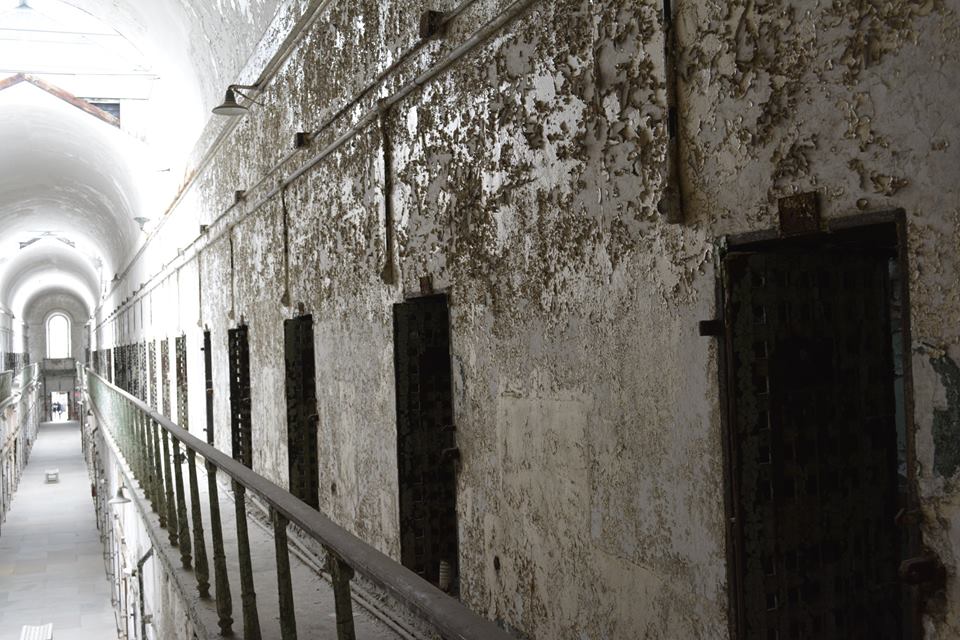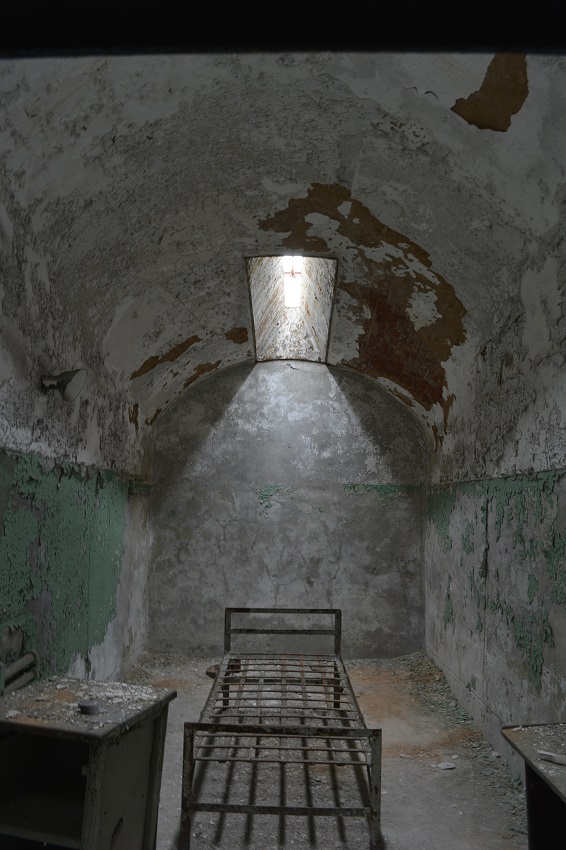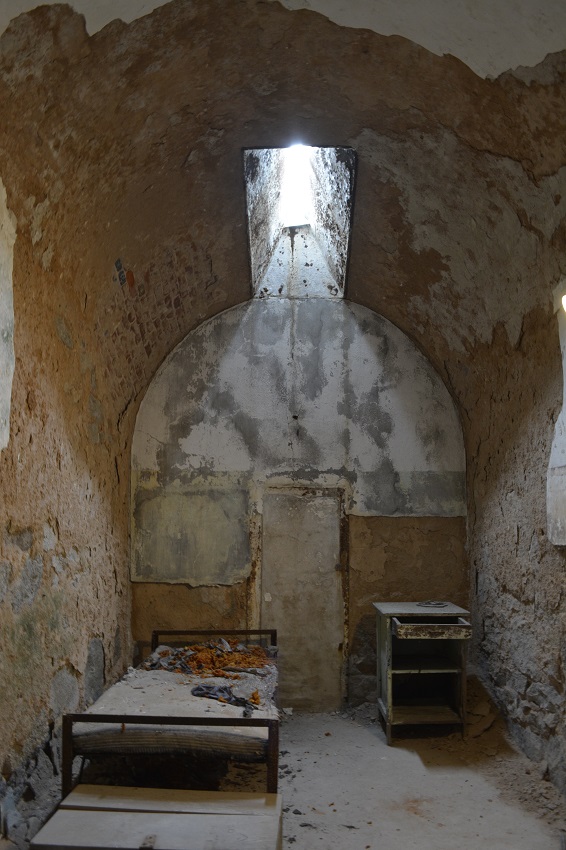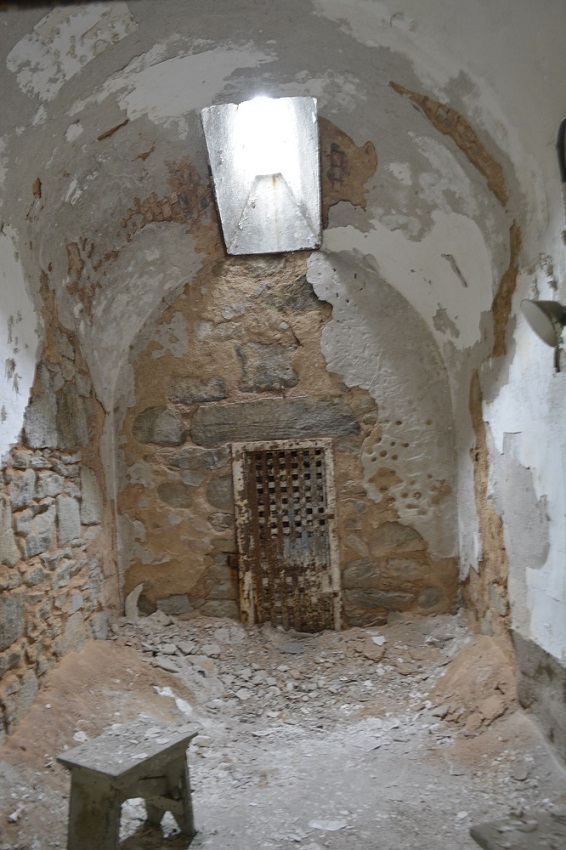
Eastern State Penitentiary Lucy Duncan / AFSC
“As time went by my heart would ache for strange things: the feel of cool grass under my feet, the feel of rain on my face, the smell of my son’s toes… If you were suddenly ripped from your life and put in a concrete box, what would you mourn? What would you ache for?” – Sara (Mariposa) Fonseca and Julia Steele Allen, from “Mariposa and the Saint.”
A few weeks ago I got to see the play, “Mariposa and the Saint: From solitary confinement, a play through letters,” performed at Eastern State Penitentiary, one of the prisons (along with the Walnut Street Jail) where solitary confinement was invented. It was quite moving and disturbing to see the play in the context of the crumbling prison, where people were first subjected to a form of incarceration that is widely regarded as torture. The play was written principally by Sara (Mariposa) Fonseca, who is incarcerated in California through letters she wrote to Julia Allen.

When Mariposa first arrives in prison, she is determined to beat the system, to not let solitary break her Spirit. She writes to Allen about the construction of the set and about the only other character, a prison guard who wears a white mask throughout and represents not the guard alone, but the “faceless machine” of the system that incarcerated her.
At one point, Mariposa says, “I don’t want this only to be about the brutality of solitary, but also about the magic of keeping your Spirit alive in here.” She tends her soul by singing, by reciting the dictionary by heart, by writing to Allen.
Over time, the tiny cell gets under her skin, wears her out. She says, “I never thought I’d find myself crippled by a concrete box.” She is given psychoactive drugs and recedes into herself. As she is nearing her release date, she throws a glass of water at a nurse and receives four more years of incarceration, another revelation of the brutality of the system.

After the play, a formerly incarcerated woman spoke to those of us in the audience. She said that at some point, you feel you can’t survive outside of that cell. She said she thought Mariposa knew what she was doing when she threw the water at the nurse: that she was afraid of being able to live outside that box, outside of prison. The woman who spoke said that she works to offer support so incarcerated women are guided and held as they come home, so they can leave both the prison outside and the prison inside.
It made me wonder about the prisons inside each of us. After all, the prison cells of mass incarceration, of solitary confinement, couldn’t exist without our collective investment in those misplaced concepts of justice. There is a prison inside each of us that stunts our ability to connect, to speak out, to walk outside of the mindsets that create injustice. We, especially those of us with privilege, are socialized to support the structures and enclosures of injustice.

What does it take to break those mindsets, those concrete boxes of assumptions we’ve breathed in most of our lives? How do we reach across the prisons inside each of us and quiet the echoing voices that tell us we can’t speak out in the face of injustices like mass incarceration and solitary confinement? How do we overcome the cells of our minds that are crippled by racism and other -isms?
I believe it takes someone who made it out reaching back, offering their hands and their heart to coax us out into the sunlight to feel the cool grass upon our feet and all that we ache for, the sweet sensation of awakening, community, and just peace. I believe that breaking free of the physical boxes in which folks are incarcerated, and the internalized prisons inside of us, is a pathway toward liberation for us all.
Letters from solitary from Granny Cart Productions on Vimeo.
Related Content
On mass incarceration, movement building, and racism: A conversation with Daniel Hunter
Building a nonviolent revolution against injustice: A conversation with Michelle Alexander